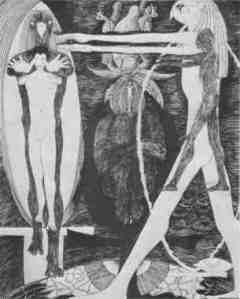Perhaps it was coincidence or perhaps it was the hand of Isis, but twice in the past week, the idea of “being joined to one’s star” has been brought sharply to my attention. So today, let’s talk a bit of the Way of the Stars…and especially the way of our own personal star.
In Isis Magic, the Path of the Stars is the path of the Prophetess or Prophet of Isis. (In Egyptian, this would be Hem/et Nutjeret; the Servant of the Goddess.)
On this path, we deal with the important star Sirius (Sothis in Greek, Sopdet in Egyptian), which is the Star of Isis. The Goddess Herself may be seen in the star and sometimes the star is said to be the ba, the manifestation or soul, of the Goddess
We honor Isis in Her singular and beautiful star, but on the Path of Stars, we also work with the idea of a universe filled with millions and millions of stars—stars that are, like us, within the body of Nuet, the Sky Goddess and Mother of Isis.
In the Pyramid Texts, it is clear that the deceased king ascends to the heavens and becomes a star. This ascension also makes him Divine, a god among Gods. He takes his place in the otherworld as a star, sometimes called the Lone Star or the Morning Star.

In Utterance 245 of the Pyramid Texts, the Sky Goddess says to the deceased, “Open up your place in the sky among the stars of the sky, for you are the Lone Star, the companion of Hu…” (Hu is one of the great creative powers of Re, “Creative Utterance.” It may be that the Goddess is likening the king to Sia, “Perception,” for indeed he specifically declares himself to be Sia in Utterance 250.) Utterance 248 reiterates the king’s star-nature. He is “a star brilliant and far traveling,” and he has “come to his throne which is upon the Two Ladies [Isis and Nephthys or Wadjet and Nekhbet] and the king appears as a star.” A text from the tomb of Basa, a priest of Min and mayor of ancient Thebes, says of the deceased, “your star be in heaven, your ba upon the earth.”
While the Pyramid Texts are concerned with the king, as time went on, the Egyptian conception of the otherworld got more democratic; everyone could participate and have their own Divine stars.
But if you’ve read any of the Pyramid or Coffin Texts or the Book of the Dead, you’ll know that those sacred texts are not intended just for the dead. The texts tell us that the knowledge they impart is also beneficial for living human beings. “As for him who knows this spell on earth . . . he will proceed to a very happy old age” says one text. Another states that anyone who knows the spell will “complete 110 years of life,” while yet another explains, “it is beneficial for anyone who does it.”

The same thing applies to being conscious of or joined to your star. It is not solely a post mortum activity. If our “star” is our Divine Self, the one we will hopefully become after death, then to know our star in this life means that its light can serve as a guide as we move through our current earthly lives. What would my star self do in any given situation?
One of the Greco-Egyptian magical papyri even has a specific ritual for learning about “your star,” and which is referred to as “an initiation.” There are quite a number of preparations, but in short, you purify yourself for seven days while the moon is waning. On the night of the dark moon, you begin sleeping on the ground each night for seven nights, waking every morning to greet the sun and to name the Deities of the hours of the day. On the eighth night, you rise in the middle of the night, perform a series of invocations and magical acts, recite the account of creation, and call upon the Great God. When the God arrives, you avoid looking in His face and ask Him about your fate. “He will tell you even about your star and what kind of daimon [spirit] you have…” (PGM XIII 646-734)
It is well for us to know “even about our star.” For it illuminates the individual life and spiritual path that is uniquely ours, but it also places us in the company of the Divine Ones.
I did a meditation, not too long ago, about the Child Horus in the stillness of the womb of Isis. It came to me that it may be there and then that we are first joined to our stars. But to truly benefit from this starry relationship throughout our lives, we must continually renew, strengthen, and deepen the connection so that our star’s holy light may always inspire and guide us.
We might think of our star as our Star Self or Isis Self. But, like the Goddess Herself, it has many other names as well. It can be called the Higher Self, the Augoeides (“Shining One”), the Holy Guardian Angel, the Higher and Divine Genius, Christ Consciousness, the Atman, the True Self, the Inner Teacher, and many more. And when we are joined to it, we will be our truer and more divine selves.




















